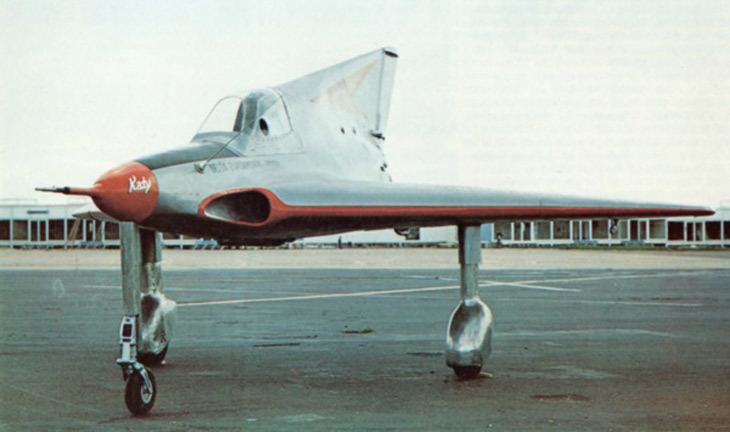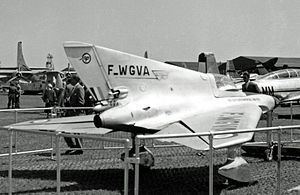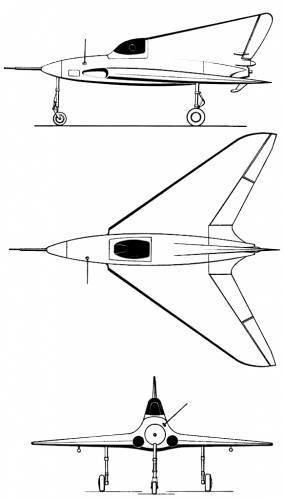Top speed 500 km/h Length 5.1 m | Wingspan 5.16 m First flight January 22, 1954 | |
 | ||
Un trange petit avion r action le payen pa 49 katy
The Payen Pa 49 Katy was a small experimental French turbojet powered tailless aircraft, first flown in 1954, was the first French aircraft of this kind and the smallest jet aircraft of its day.
Contents
- Un trange petit avion r action le payen pa 49 katy
- Design and Development
- Operational History
- Specifications
- References

Design and Development

Roland Payen was a pioneer of tailess and delta winged aircraft, building two designs, a light aircraft and a fighter, before the second world war. The Pa 49 Katy was his first post-war design.

The all wood Katy was a true tailess aircraft, in the sense that it had no separate horizontal stabiliser. The wing leading edge was swept at about 55° but, unlike the classic delta with its straight trailing edge, the Katy's was swept at about 30° with each trailing edge carrying full span control surfaces, elevators inboard and ailerons outboard.

At its root, the wing merged gently into the fuselage with small air intakes for the 1.47 kN (330 lbf) Turbomeca Palas engine built into the leading edge. The cockpit was placed just aft of the intakes and the long straight-edged fin, swept at about 75° and initially as wide as the cockpit, began immediately behind it, narrowing to a slightly swept trailing edge carrying a full depth rudder. Images recorded before the first flight show the Katy with a low bicycle undercarriage with wing tip skids but, by the time of the flight itself, this was replaced by a fixed, un-faired tricycle undercarriage.
Operational History

The first flight of what was now the Pa 49A took place on 22 January 1954 at Melun-Villaroche flown by Tony Ochsenbein, a comparatively inexperienced pilot, who had previously logged only 30 minutes on jets. Ten hours of manufacturer's testing was followed, in April 1954, by assessment at the Centre d'Essais en Vol (CEV), Brétigny-sur-Orge. The aerobatic ability of the Pa 49 was established. At the CEV it was fitted with a split rudder airbrake; the two surfaces of the rudder separated from just below the tip, driven via faired external links near the bottom, into a V at the hinge for braking, rotating together for yaw control. This airbrake was designed by Fléchair SA, a company founded by Payen. At the time of its appearance at the 12th Salon International d'Aeronautique at Paris, in 1957, the undercarriage legs were faired and the main wheels enclosed in spats and the aircraft renamed the Pa 49B. For a time the nosewheel was also spatted. There were plans for a version with a retractable undercarriage, but this did not come about.
When the flight testing programme ended in 1958 Payen gave the aircraft to the Musée de l'Air et de l'Espace at Paris - Le Bourget Airport. He continued to design delta winged aircraft and the Payen Pa 71 and Pa 149 projects of the 1970s were direct developments of the Katy.
Specifications
Data from Jane's All the World's Aircraft 1956-57
General characteristics
Performance
